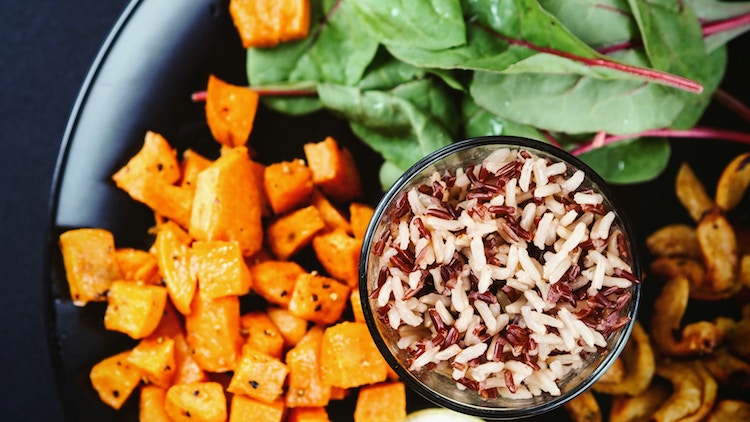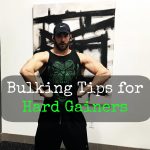Staying Lean While Getting Big: It’s Not Impossible!
Summer’s winding down, cold weather is coming, and you’re probably ready to put on some size. And, as everyone knows, drug-free bodybuilders have to get FAT to put on muscle – right? Wrong!
Not only do you not have to gain swaths of body fat to pack on muscle mass, it’s actually counter-productive to your long-term progress. Assuming your end goal is a big, lean, aesthetic physique, you’re just going to have to diet all that fat off eventually. More fat means longer dieting, and a longer diet will increase your chances of burning off that hard-earned muscle. Dirty bulking may seem easy and fun in the short term, but you’ll be kicking yourself later if you let things get out of hand.
So, how do you stay lean while getting big? It’s not rocket science, but it’s certainly going to take more thought, planning, and daily effort than just eating everything in sight. Here’s the lowdown on lean mass gains…
Bodyfat Levels and Fat Gain: The Math

Before we get into the nitty-gritty details of a clean bulking diet, understand this: you’re not going to avoid any and all fat gain! Adding purely lean tissue is all but impossible, and a little bit of math can help you understand why.
Imagine you began bodybuilding at 150 pounds with 15 percent body fat. If you gained 25 pounds of purely lean mass, you’d be sitting at 175 pounds and about 13 percent body fat. If you gained another 25 purely lean pounds, you’d be 200 pounds at 11 percent. That kind of dramatic transformation is certainly possible over time, but you can’t do it all in one fell swoop; nobody gains ONLY muscle!
However, imagine you gained 22 pounds of muscle and 3 pounds of fat from that starting point. That would put you at 175 pounds and about 14.5 percent body fat – still slightly leaner than you were before. You may actually have to gain a higher proportion of fat than that, but the point still stands: you can stay relatively lean, even when some of the mass you’re adding is fat!
Starting Out Right

A lean starting spot is one of the most important aspects of a good, clean bulk. Since you’re inevitably going to see at least some fat gain, you need to be lean enough to have some “wiggle-room” from the get-go. If you’re not already comfortable taking your shirt off in public, you shouldn’t be trying to gain weight! Plus, starting out fat will ensure that you won’t have long before you need to switch gears and diet.
Just as importantly, a high initial level of body fat may actually hinder muscular gains and promote further fat gains. Unfortunately, large fat deposits send hormonal signals that mess with your body’s nutrient partitioning, making it more likely than any given caloric load will be stored as fat. When you’re lean, however, you’ve got a revved-up metabolism and a body that’s more than willing to favor muscle building over fat storage.
Controlling Carbs

Carbs are probably the most anabolic nutrient you can consume, but they will easily cause growth in muscle tissue and fat cells alike. Therefore, the key to lean gains is manipulating your carbohydrate intake for maximum benefit! Consume as many as you need – from quality sources – in the meal before you workout. Follow your training session with a glucose-laden post-workout shake, and add the remainder of your carbs to your first solid meal afterward.
What about breakfast? Truth be told, most people don’t need to eat carbs in the morning (unless breakfast is also their pre-workout meal). By limiting your carbs to the pre-, intra-,and post-workout periods, you’re keeping your insulin low the rest of the day. Low insulin leads to a lower likelihood of fat storage, and you may even be able to burn a little body fat during the other times of day. So, unless you’re super-skinny and struggling to consume enough calories, limit yourself to proteins and fats – and plenty of them – at your other meals.
Keeping Track

Lifters’ needs for proteins, carbs, and fats are so individual that I can’t just make a blanket recommendation on amounts. That said, I do believe everyone needs to keep track of what they’re eating! If you want to optimally gain muscle with minimal body fat, then you need to maintain a moderate caloric surplus. What’s more, you need to make sure that surplus comes from the right nutrients; an extra 100 grams of carbs or fats has a far different effect on your body compared to an extra 100 grams of protein!
To ensure that you’re not overshooting your nutrient needs, you’ll need to count your macros. There are plenty of free digital programs for tracking proteins, fats, and carbs from every food imaginable, so don’t make excuses! This extra effort will pay off big time, especially when you need to make adjustments down the road. When you know how much you’re eating day-to-day, gaining or losing weight becomes a simple matter of math.
Don’t fall for the current “if it fits your macros” craze, either. Is it okay to swap out white rice for sweet potatoes, or whole wheat bread for oatmeal? Sure – those are all decent sources of starch. But don’t think that you can eat candy and ice cream every day as long as you fit them into your carb counts. Junk food affects your body far differently from clean carbs, lean proteins and healthy fats, and you’re NOT going to see optimal results from sub-optimal food choices!
Slow and Steady

While your ultimate goal is to look great in the mirror, you should still let numbers be your guide. Aim for around 2-3 pounds gained per month, as anything more is likely to be nothing but fat. Even more importantly, make sure you’re getting stronger! Muscular gains should go hand-in-hand with increased strength, and if you’re gaining body weight but not hitting PRs, you are getting fatter! Start out lean, spend at least a year gaining slowly but surely, and you’ll be amazed with your results.











